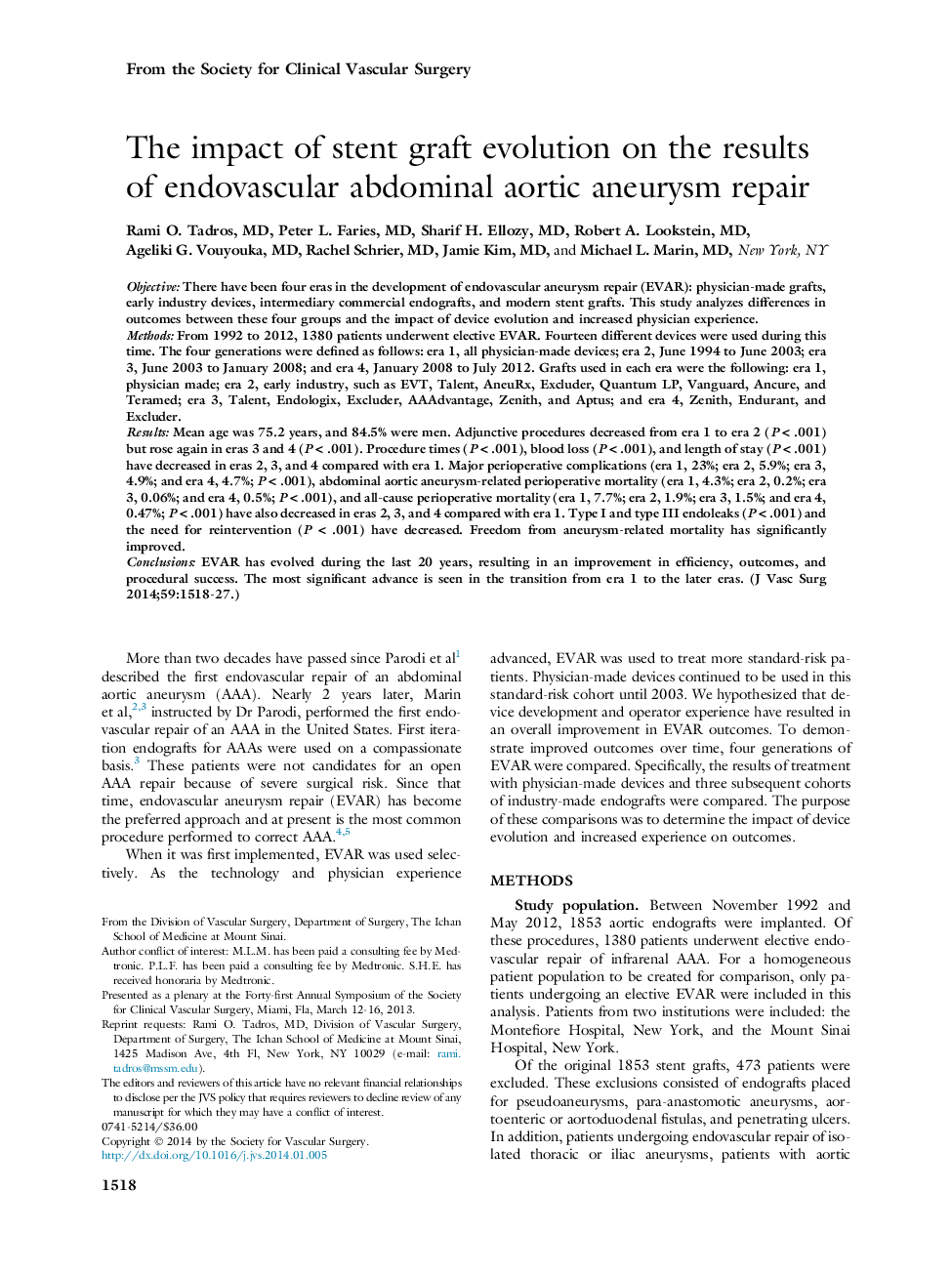| کد مقاله | کد نشریه | سال انتشار | مقاله انگلیسی | نسخه تمام متن |
|---|---|---|---|---|
| 5995452 | 1179843 | 2014 | 10 صفحه PDF | دانلود رایگان |
ObjectiveThere have been four eras in the development of endovascular aneurysm repair (EVAR): physician-made grafts, early industry devices, intermediary commercial endografts, and modern stent grafts. This study analyzes differences in outcomes between these four groups and the impact of device evolution and increased physician experience.MethodsFrom 1992 to 2012, 1380 patients underwent elective EVAR. Fourteen different devices were used during this time. The four generations were defined as follows: era 1, all physician-made devices; era 2, June 1994 to June 2003; era 3, June 2003 to January 2008; and era 4, January 2008 to July 2012. Grafts used in each era were the following: era 1, physician made; era 2, early industry, such as EVT, Talent, AneuRx, Excluder, Quantum LP, Vanguard, Ancure, and Teramed; era 3, Talent, Endologix, Excluder, AAAdvantage, Zenith, and Aptus; and era 4, Zenith, Endurant, and Excluder.ResultsMean age was 75.2Â years, and 84.5% were men. Adjunctive procedures decreased from era 1 to era 2 (PÂ < .001) but rose again in eras 3 and 4 (PÂ < .001). Procedure times (PÂ < .001), blood loss (PÂ < .001), and length of stay (PÂ < .001) have decreased in eras 2, 3, and 4 compared with era 1. Major perioperative complications (era 1, 23%; era 2, 5.9%; era 3, 4.9%; and era 4, 4.7%; PÂ < .001), abdominal aortic aneurysm-related perioperative mortality (era 1, 4.3%; era 2, 0.2%; era 3, 0.06%; and era 4, 0.5%; PÂ < .001), and all-cause perioperative mortality (era 1, 7.7%; era 2, 1.9%; era 3, 1.5%; and era 4, 0.47%; PÂ < .001) have also decreased in eras 2, 3, and 4 compared with era 1. Type I and type III endoleaks (PÂ < .001) and the need for reintervention (PÂ < .001) have decreased. Freedom from aneurysm-related mortality has significantly improved.ConclusionsEVAR has evolved during the last 20Â years, resulting in an improvement in efficiency, outcomes, and procedural success. The most significant advance is seen in the transition from era 1 to the later eras.
Journal: Journal of Vascular Surgery - Volume 59, Issue 6, June 2014, Pages 1518-1527
